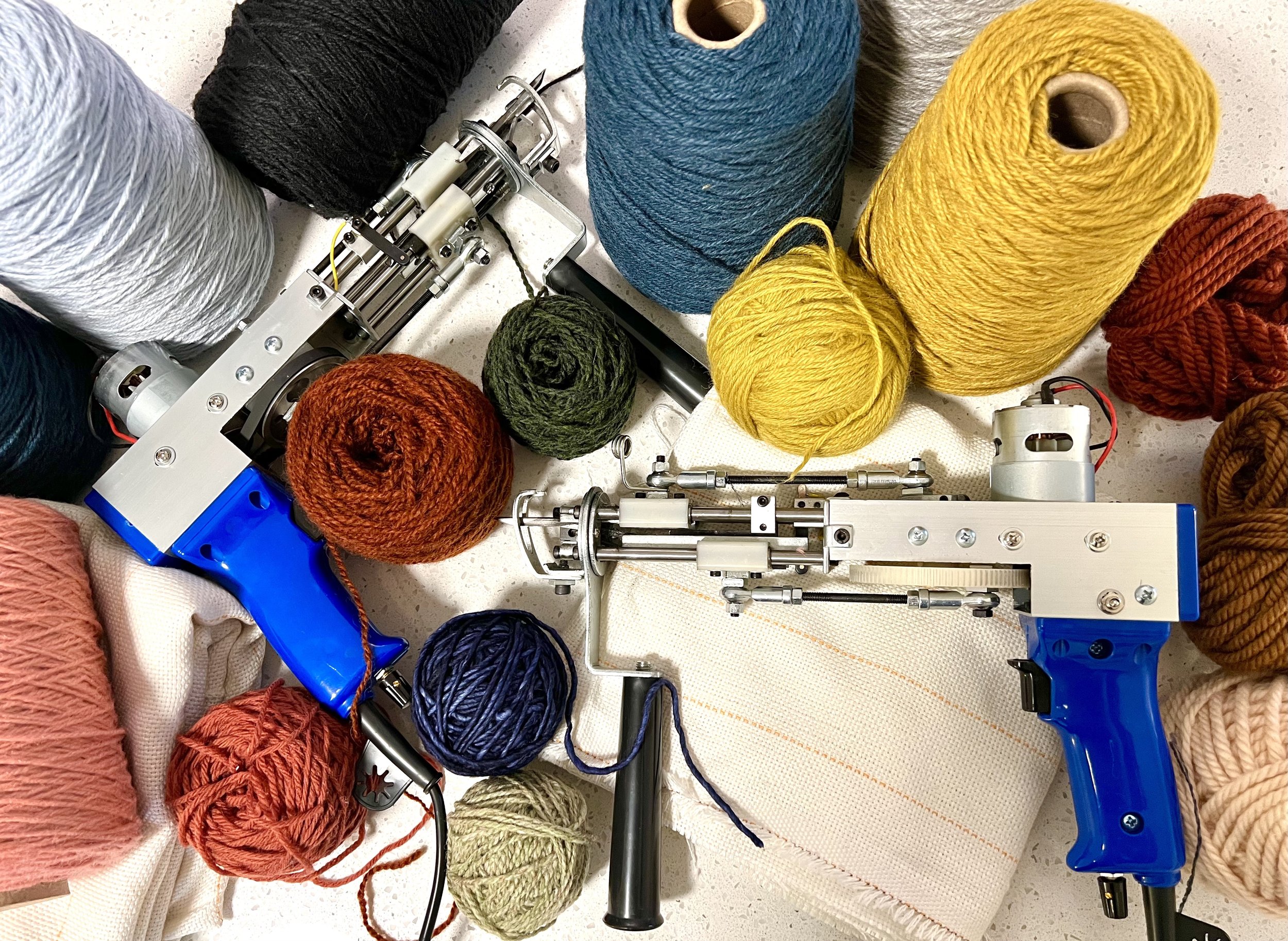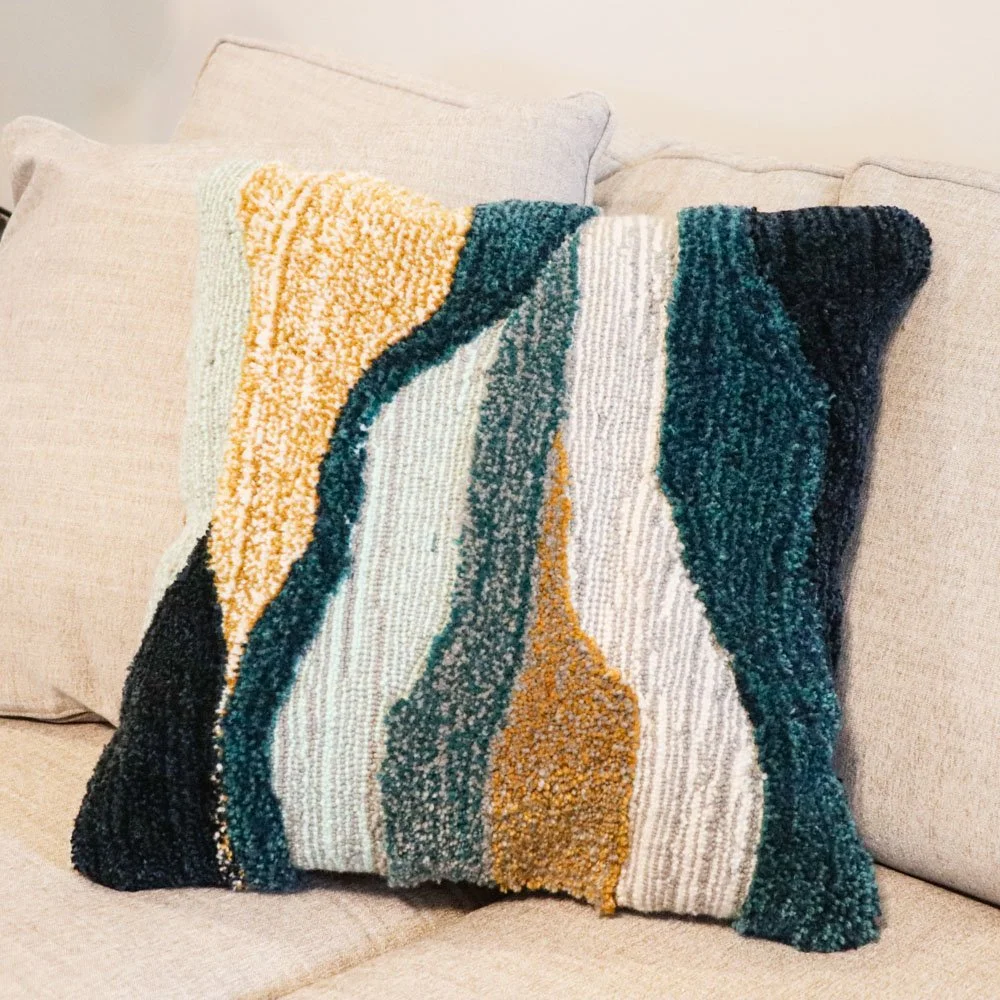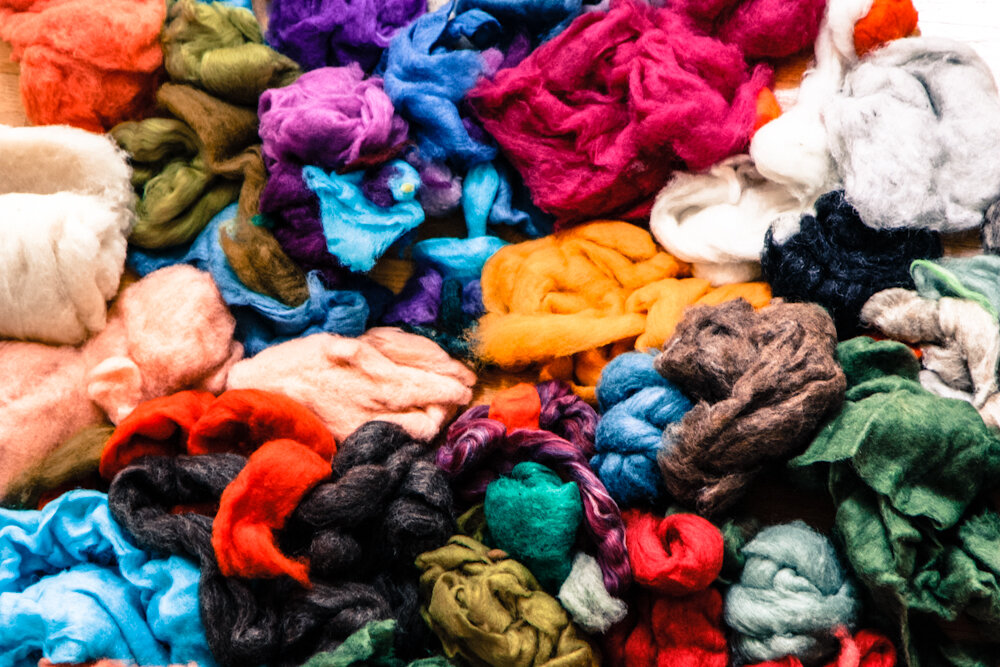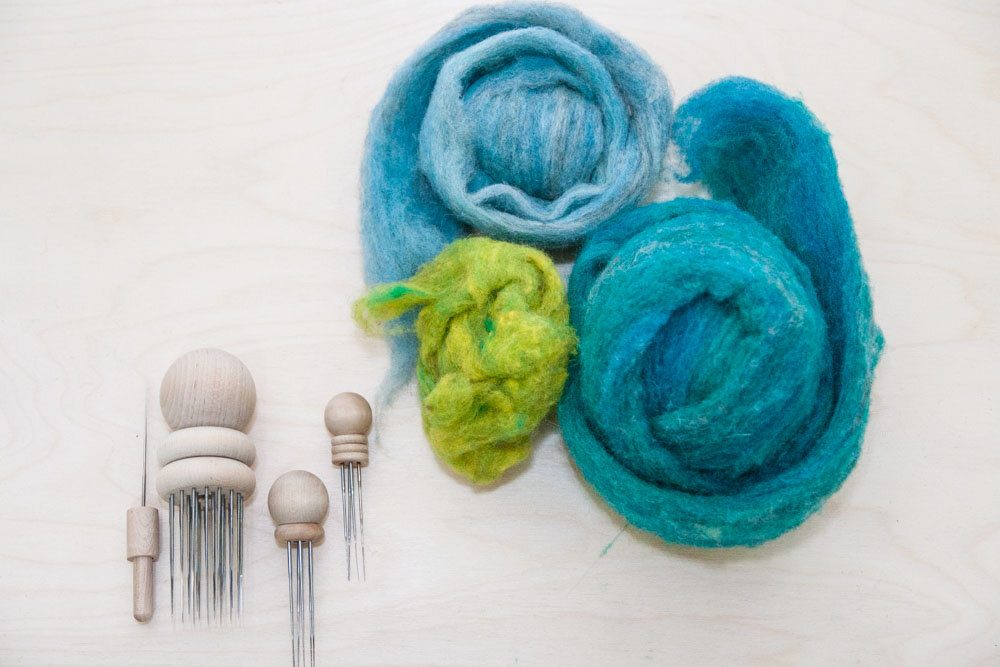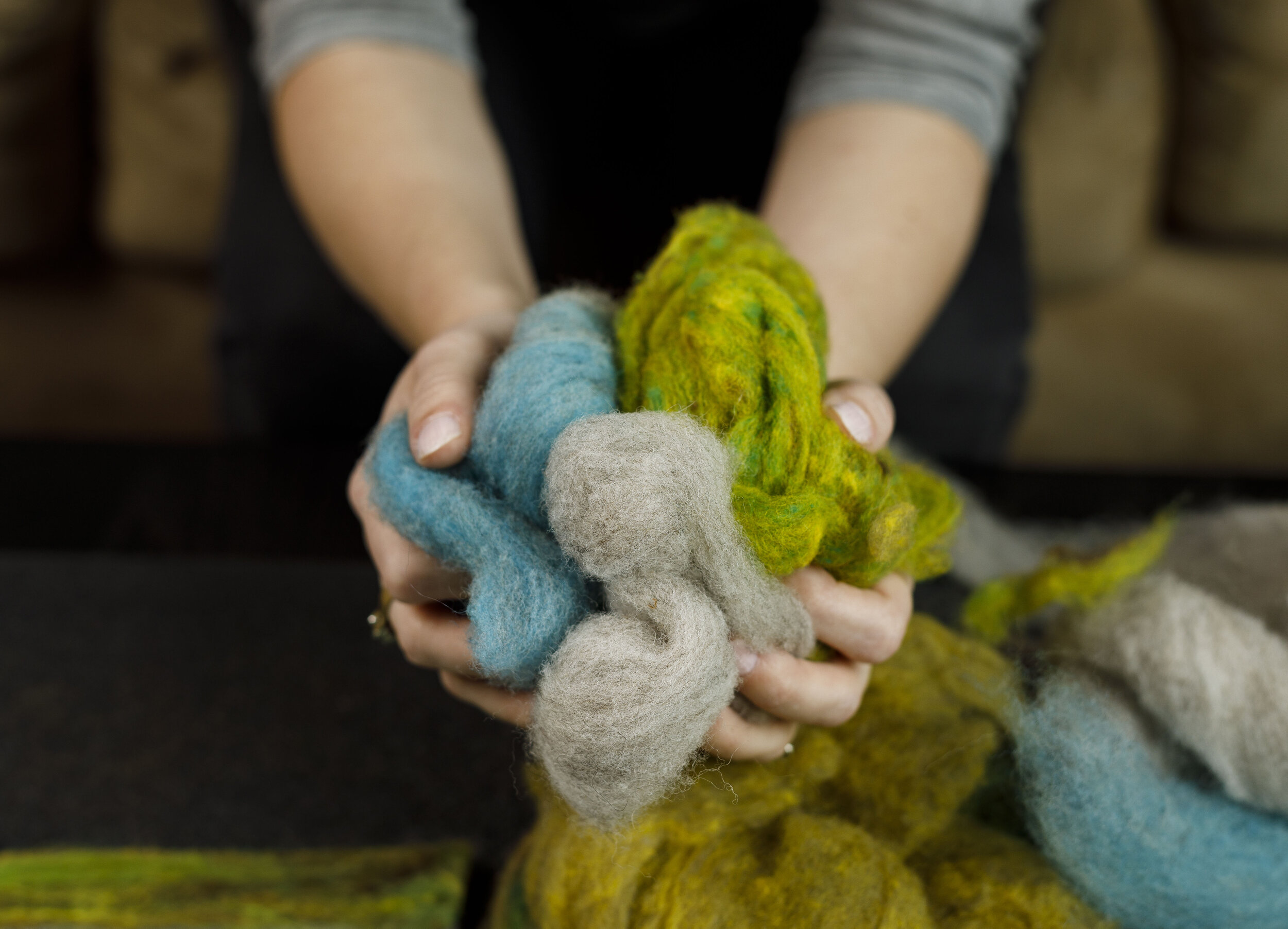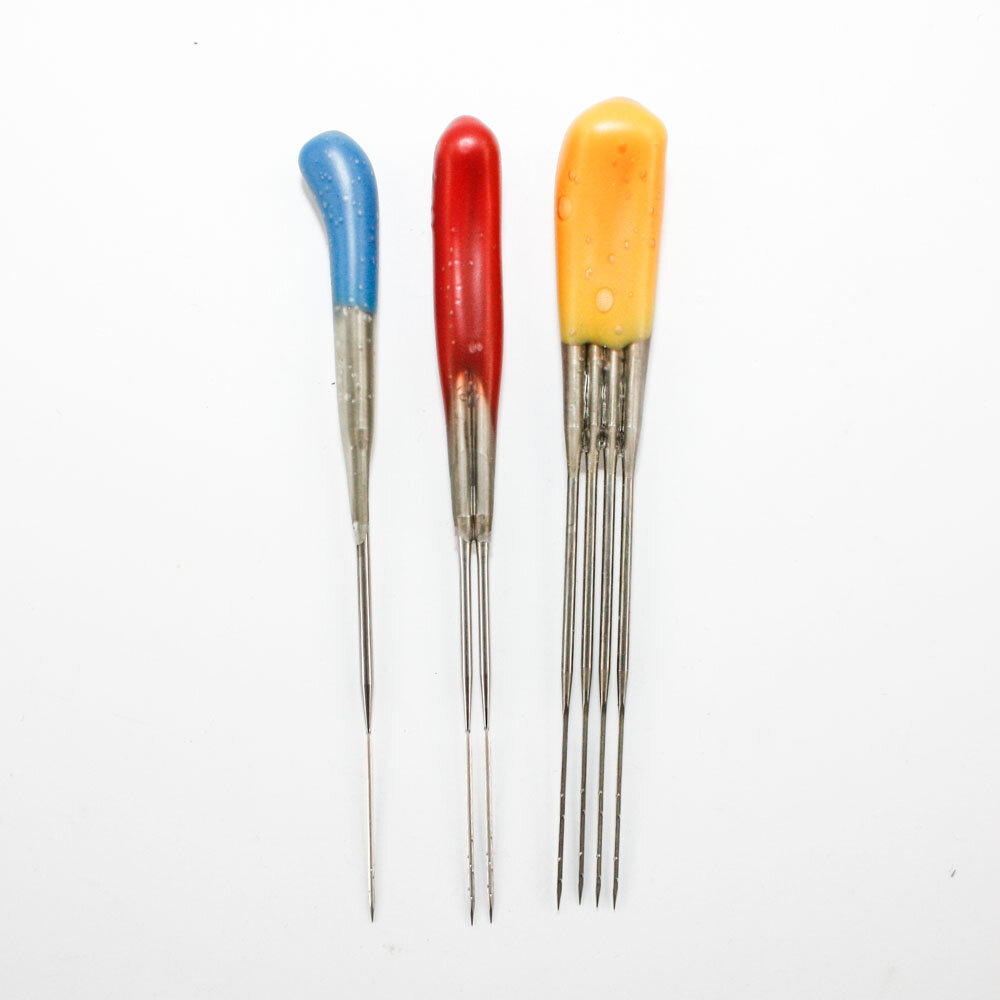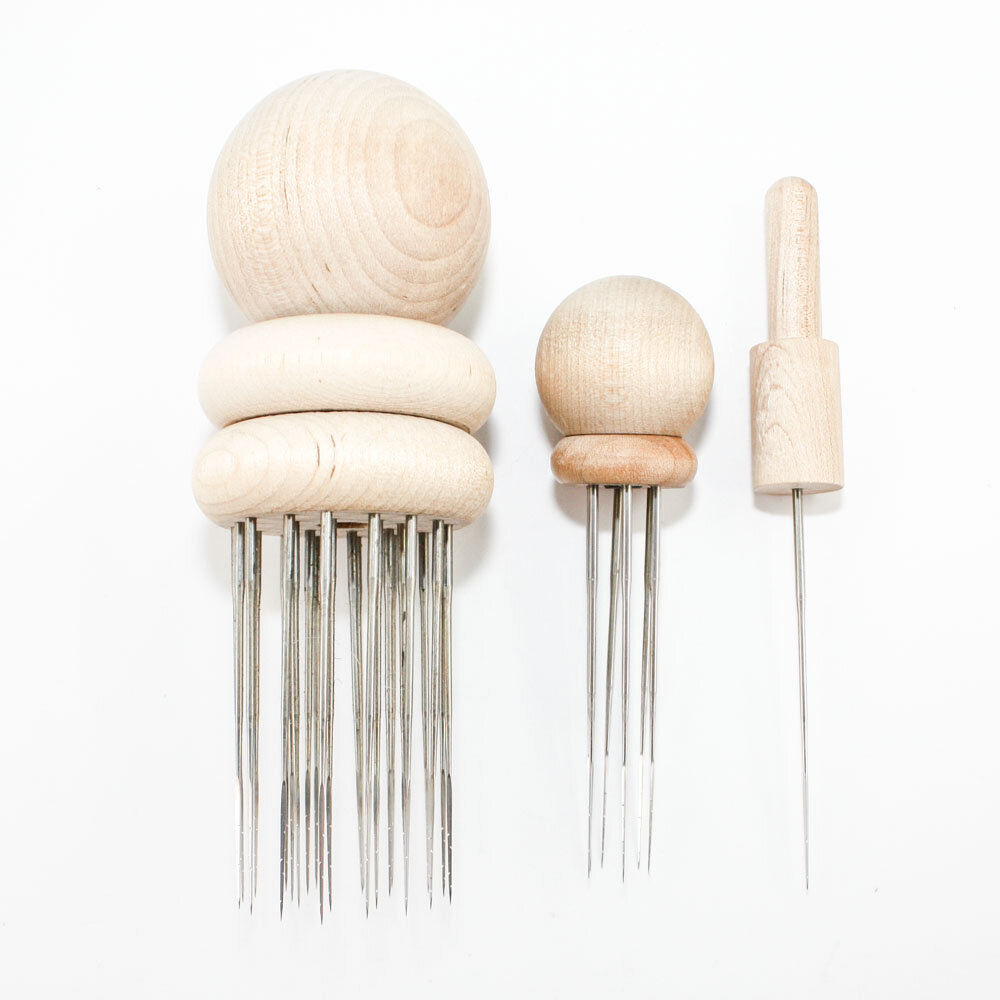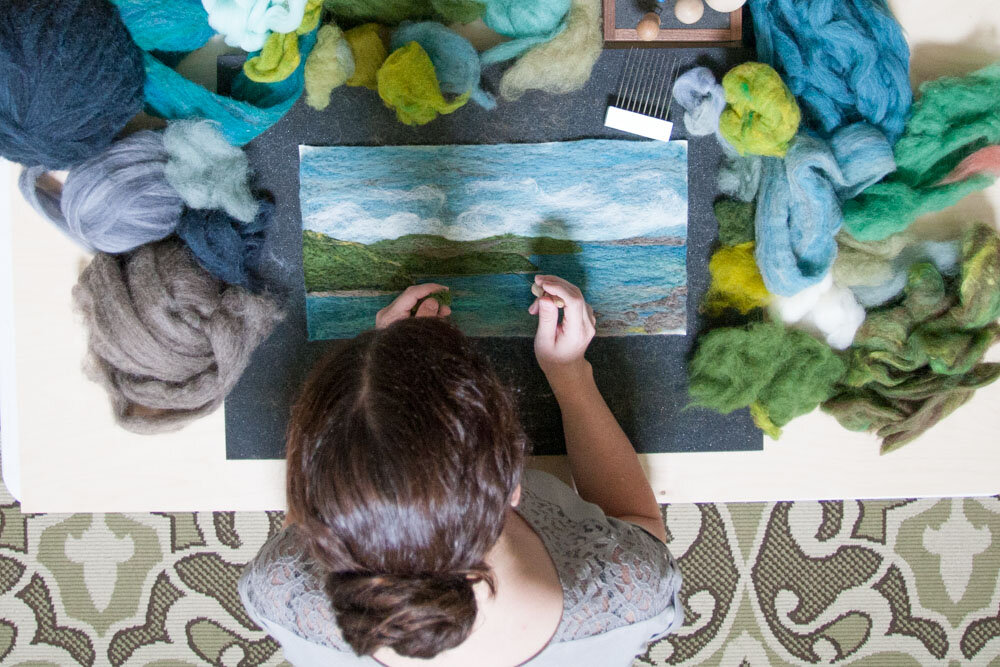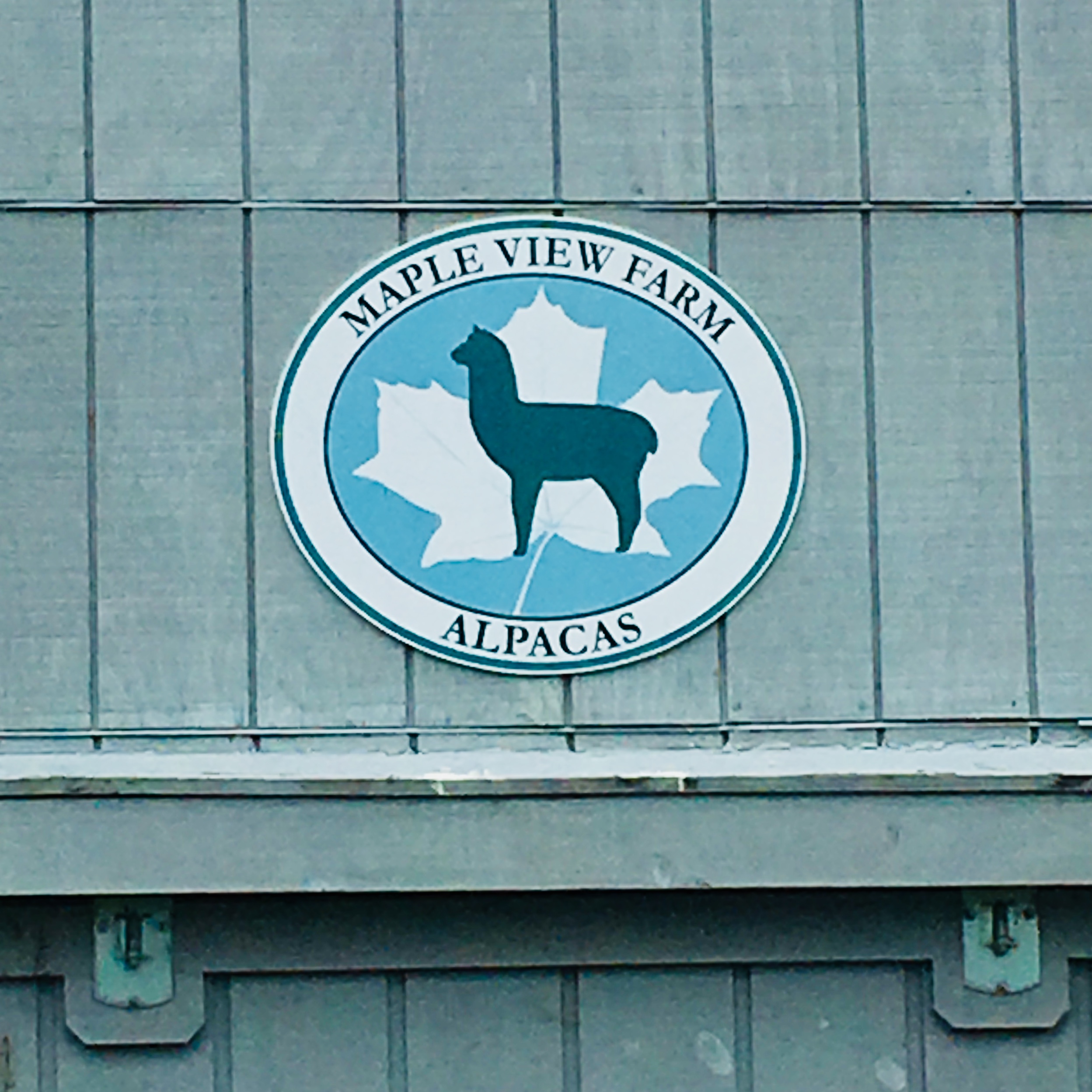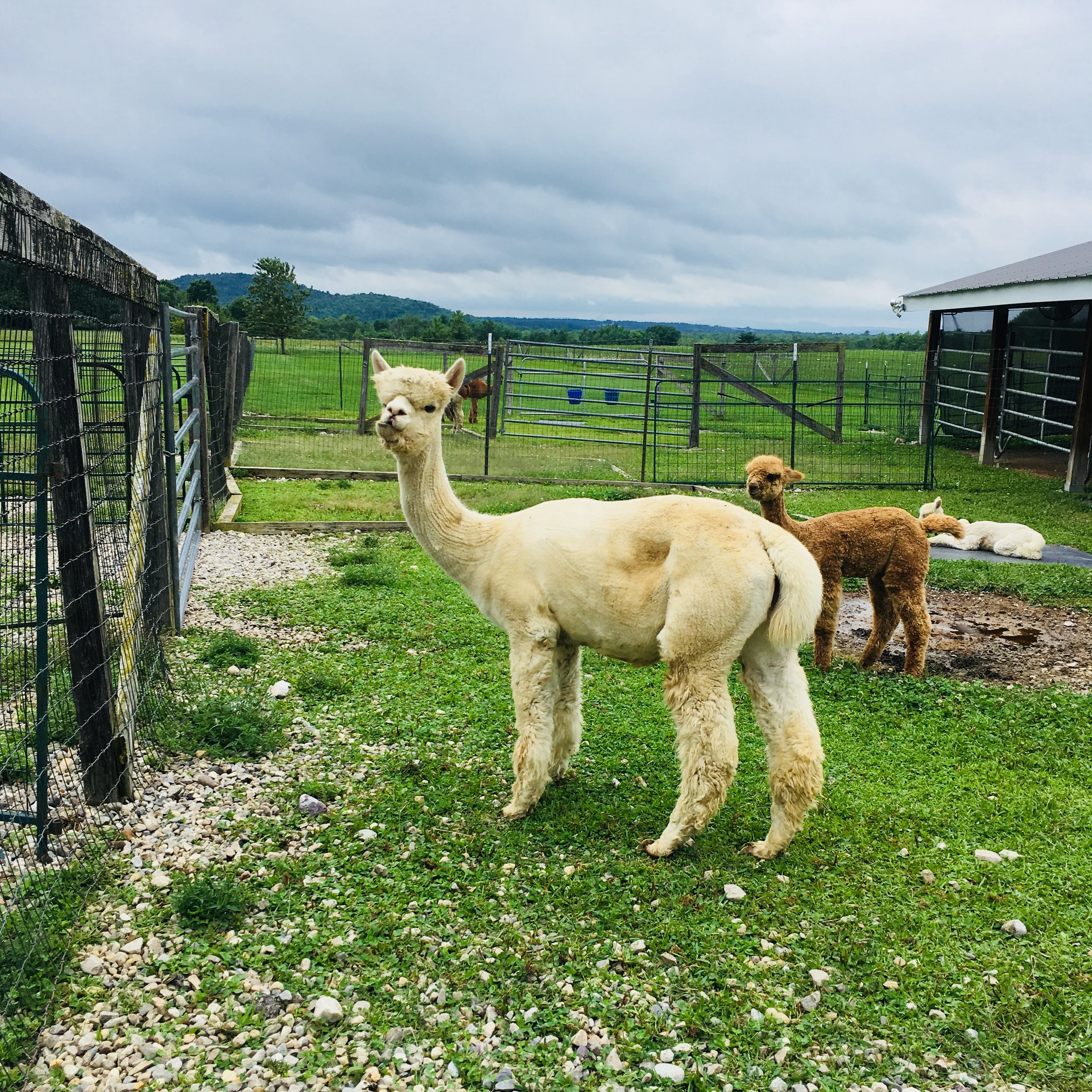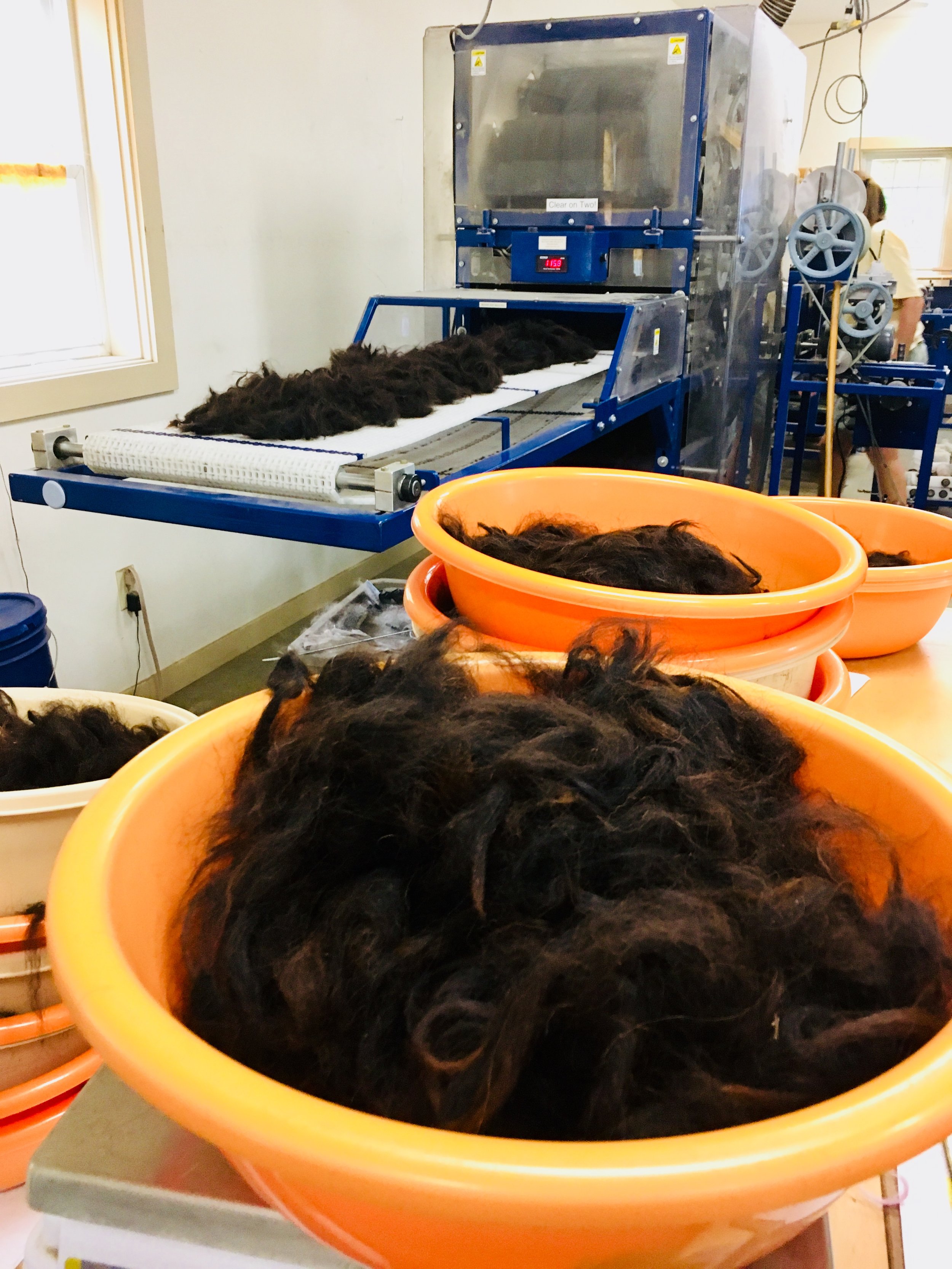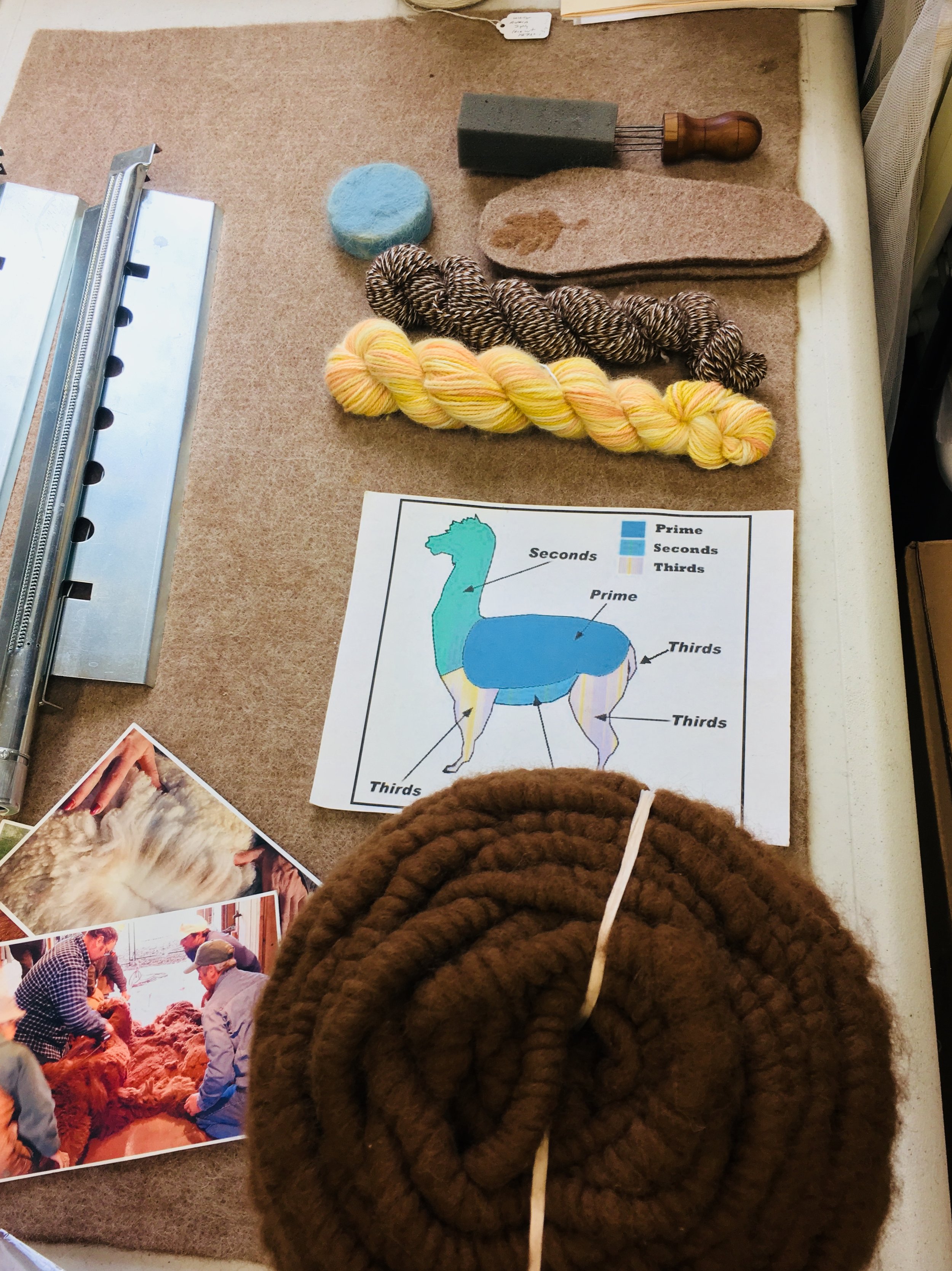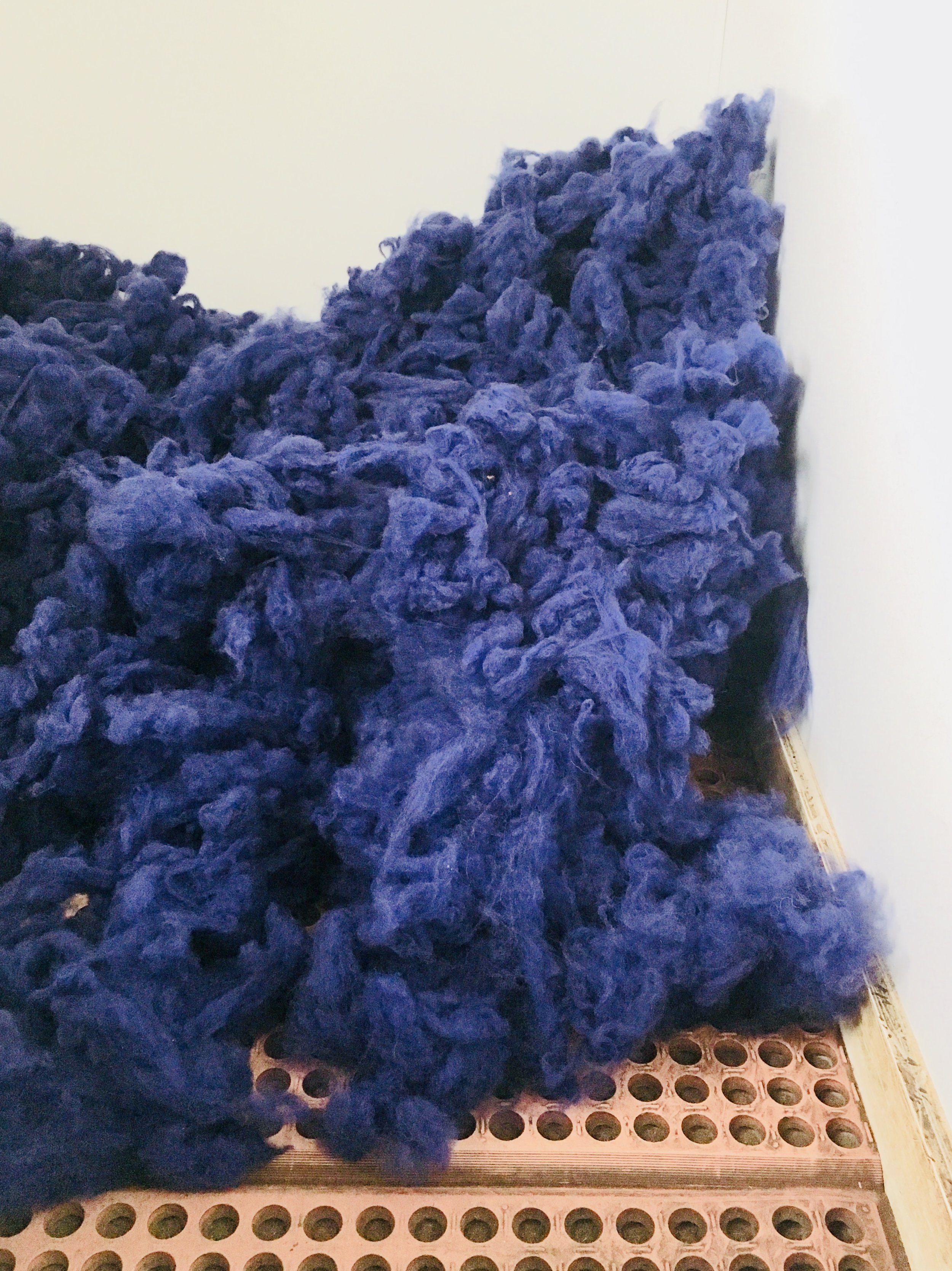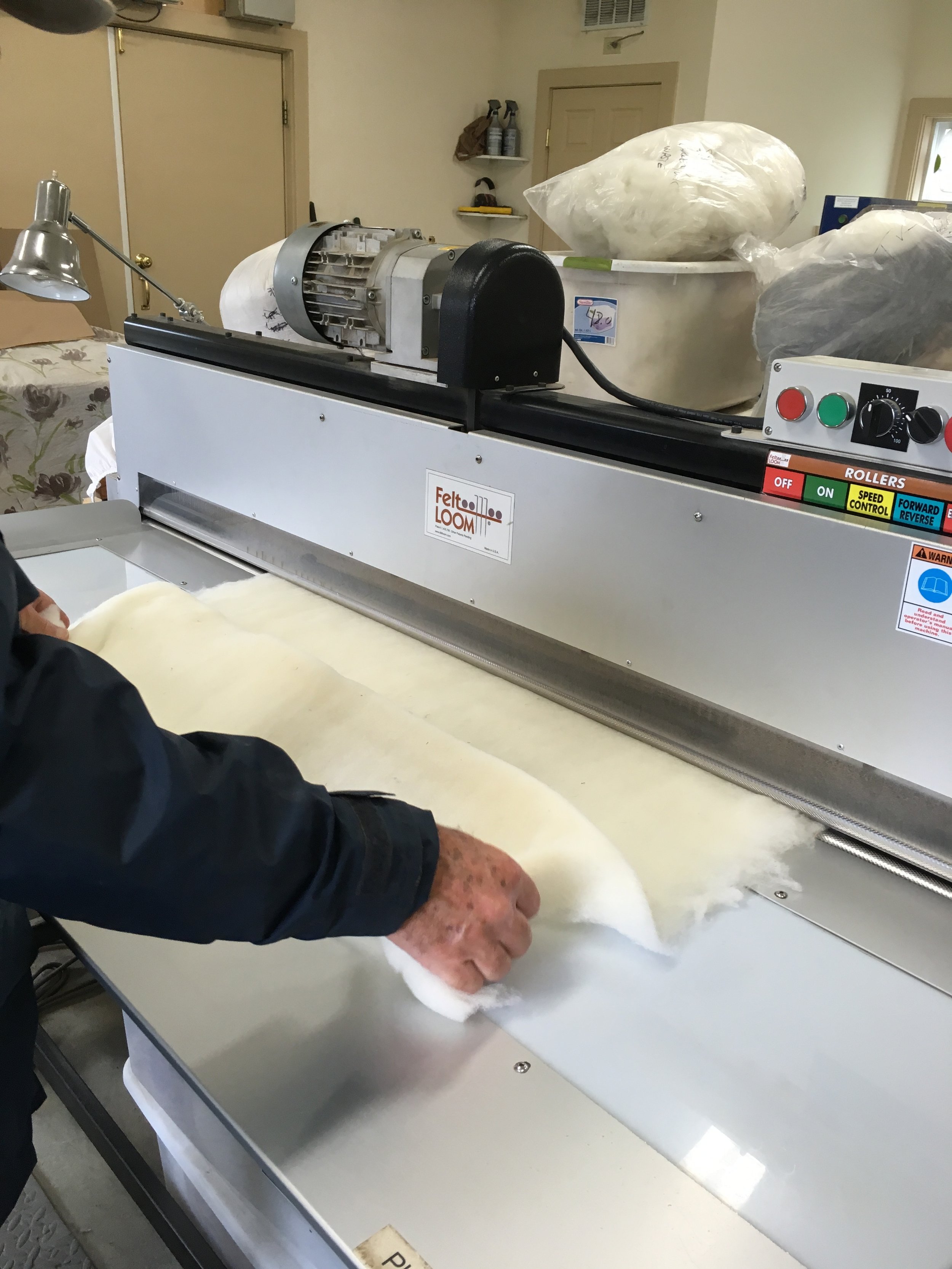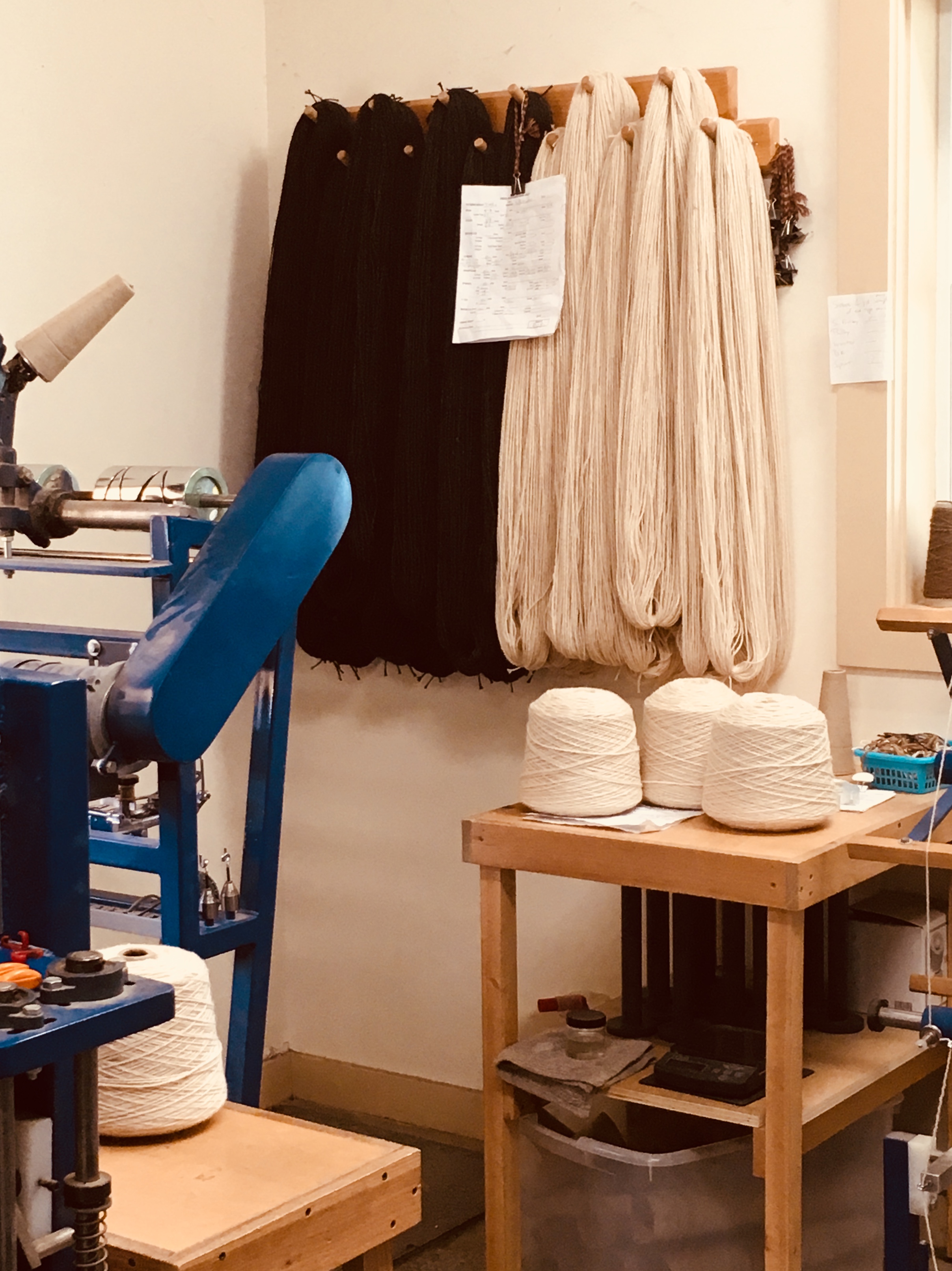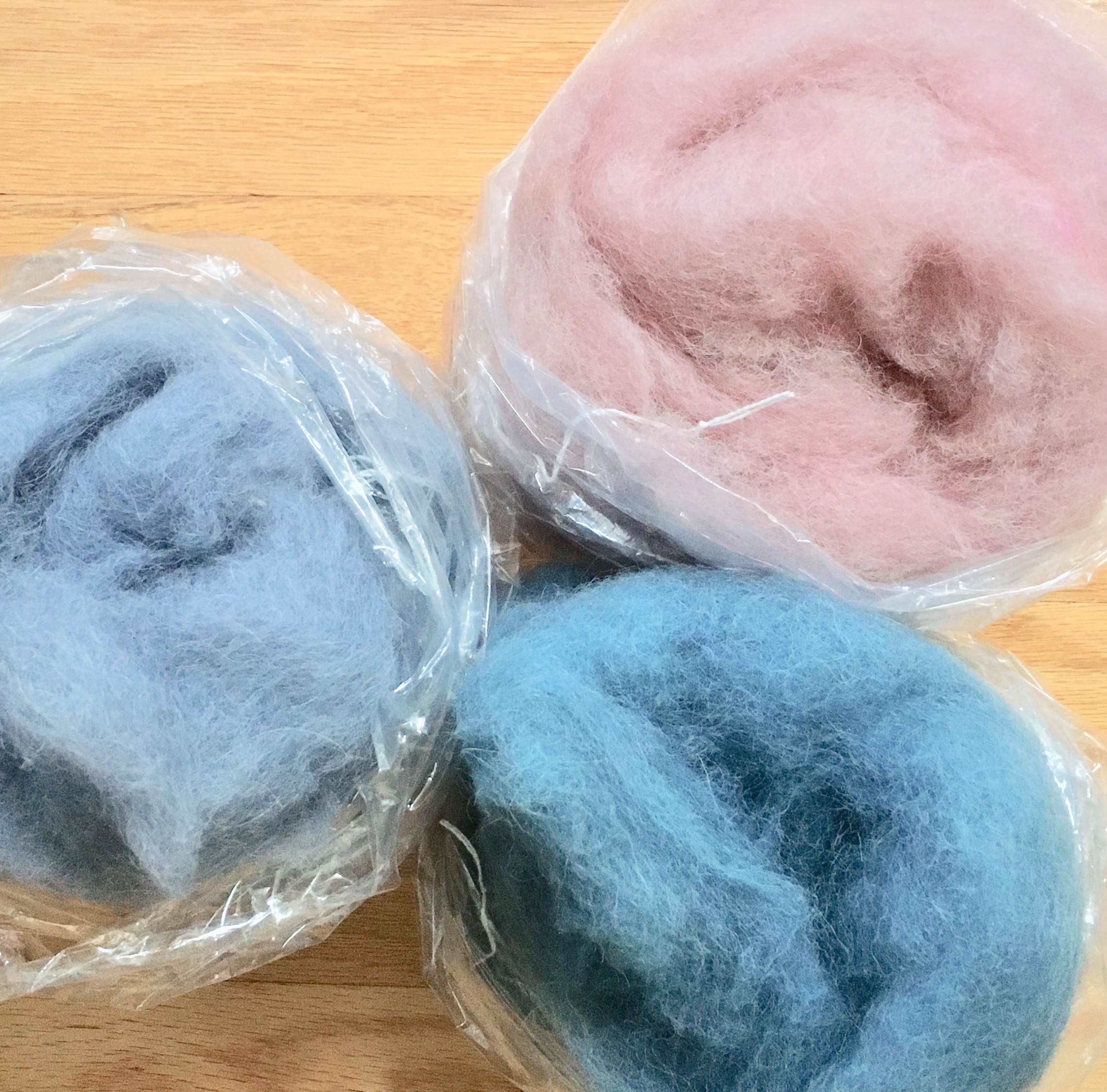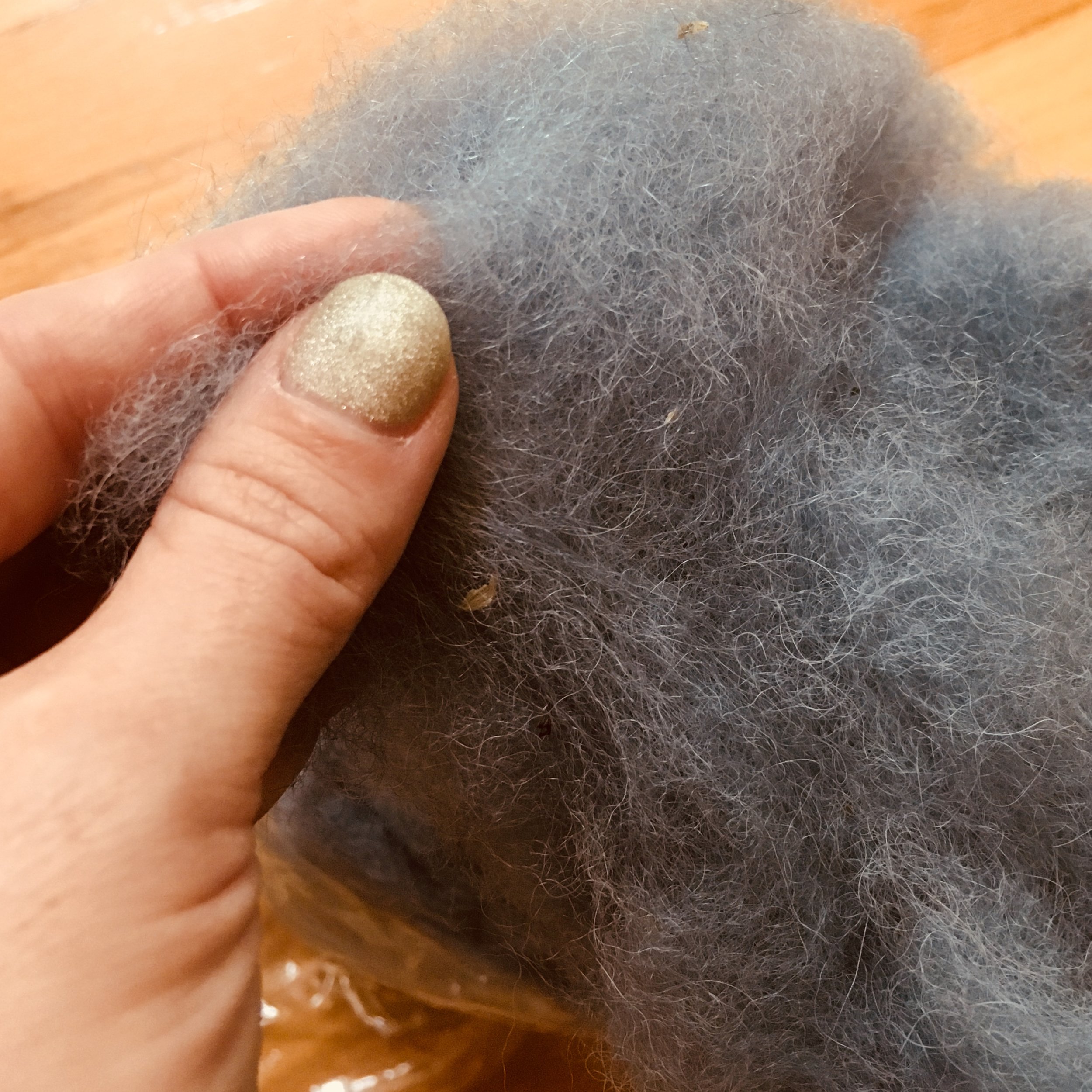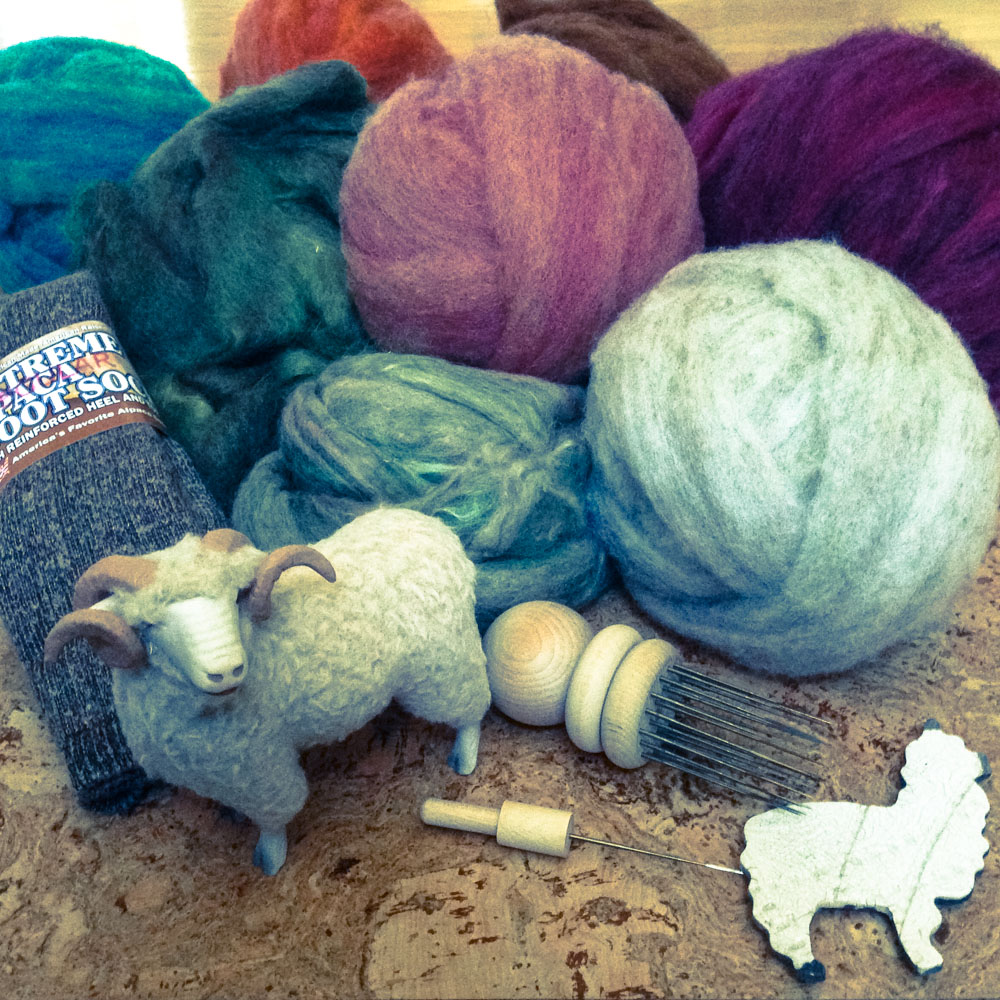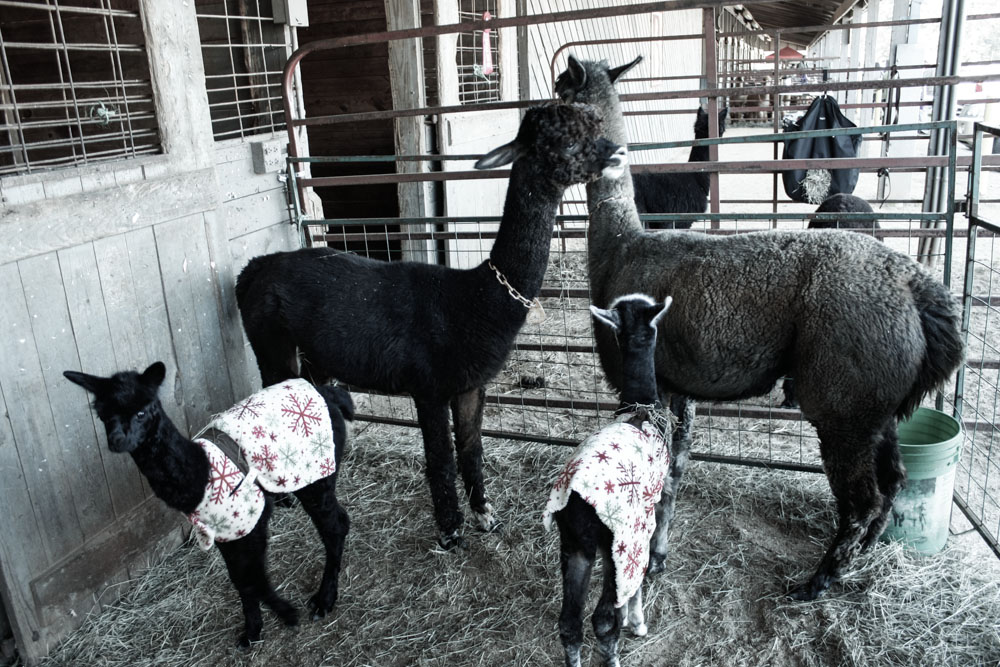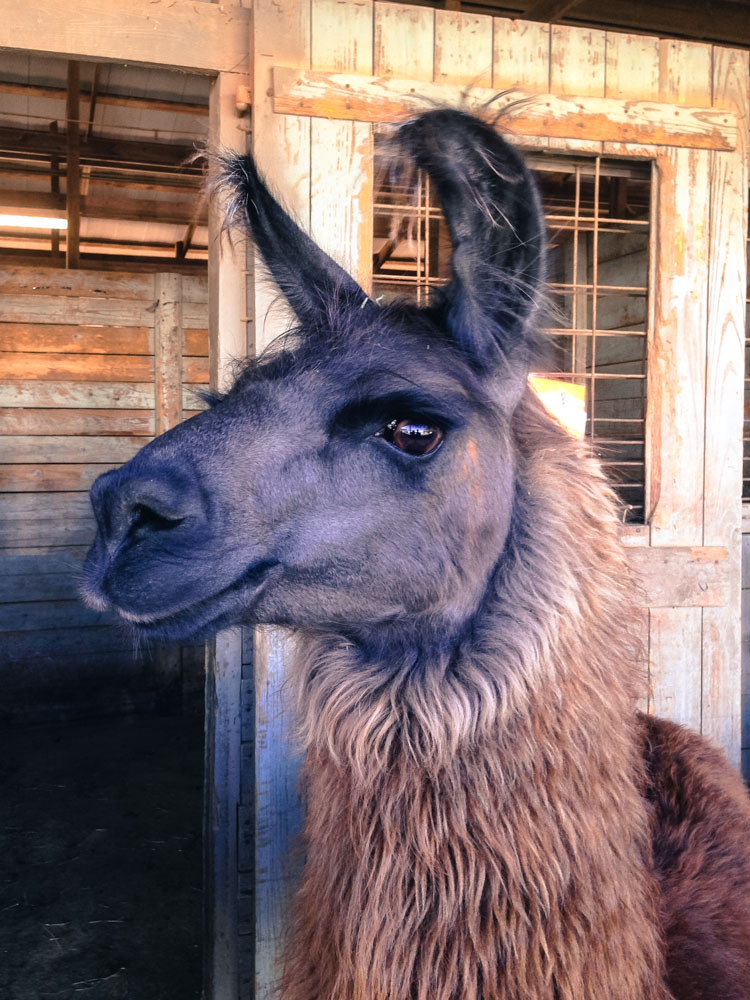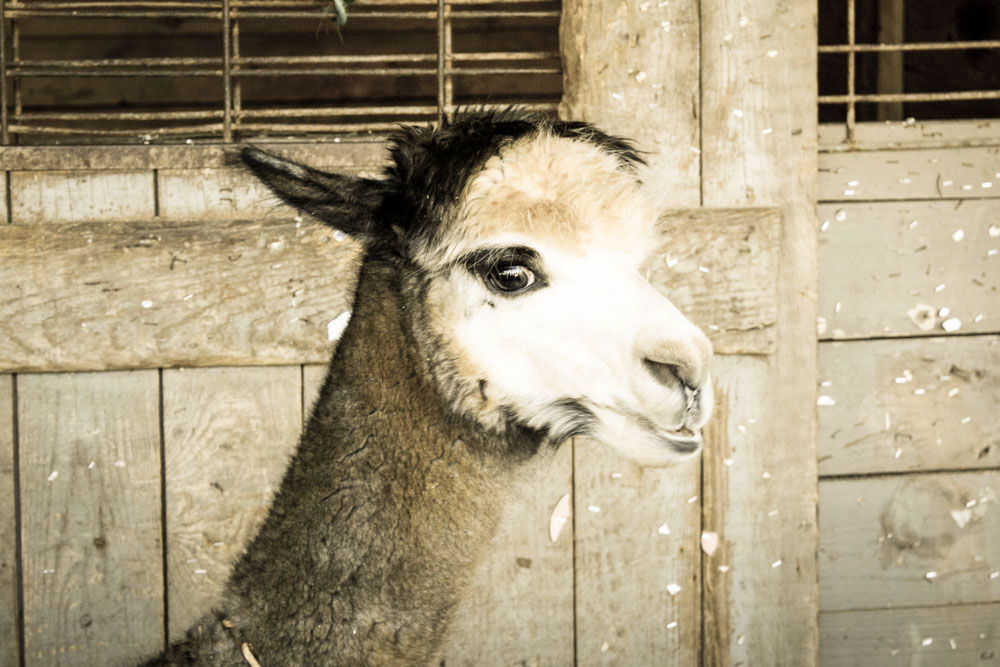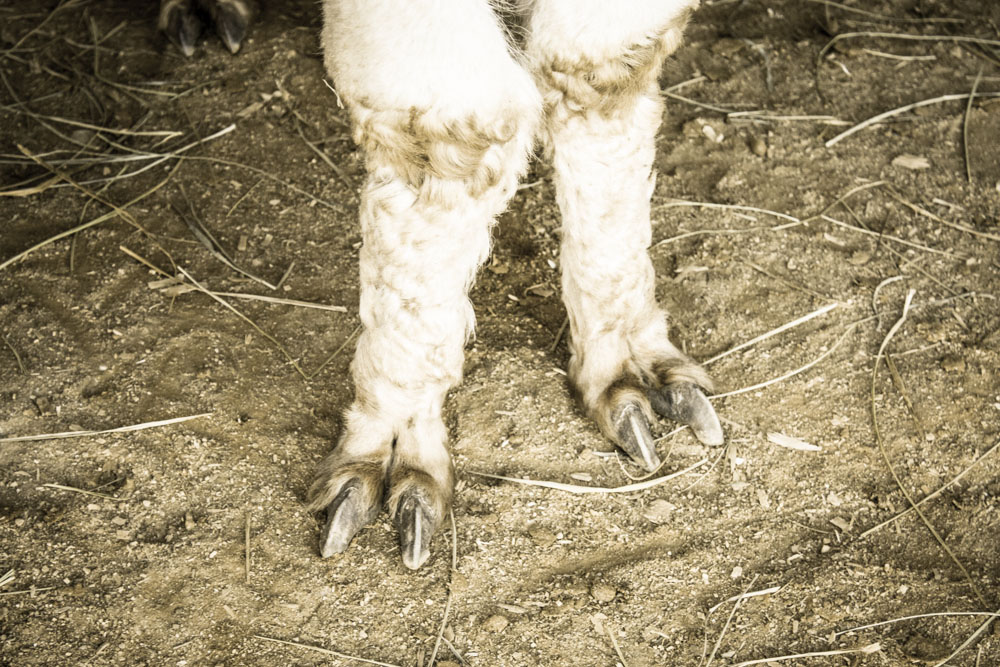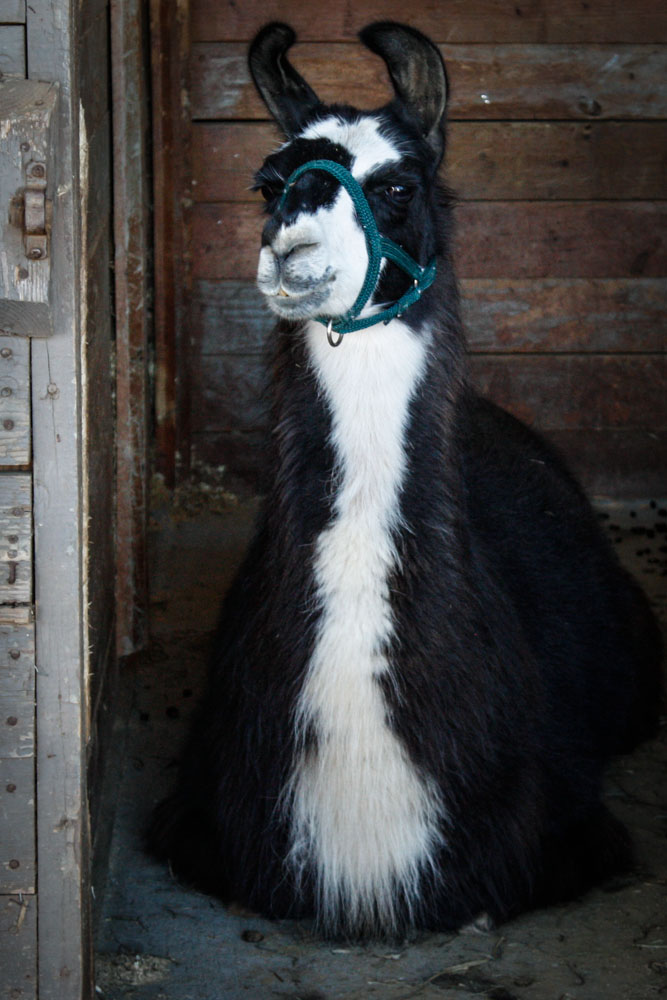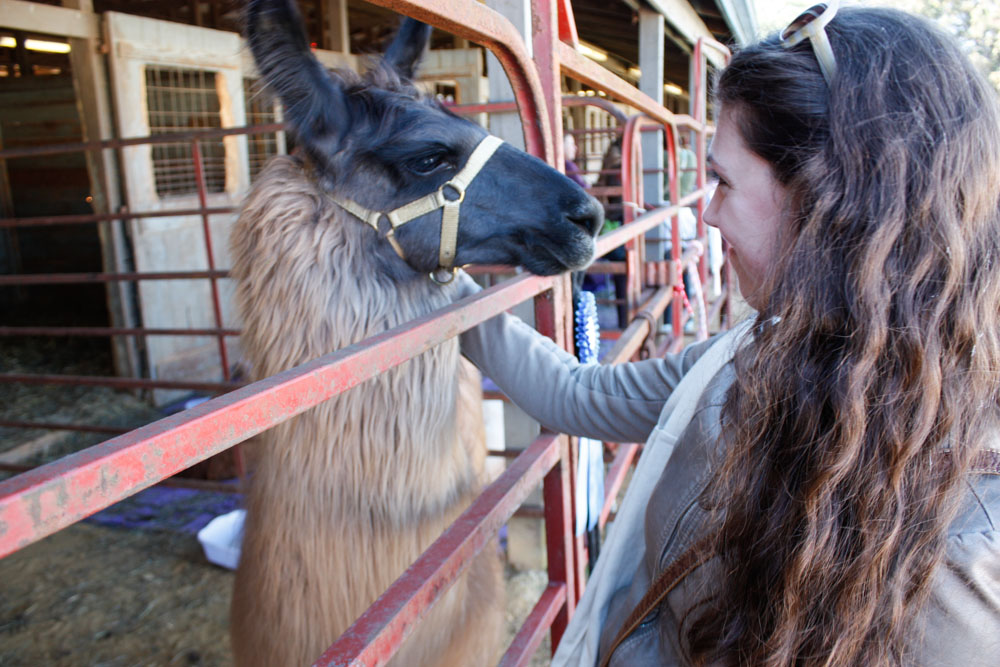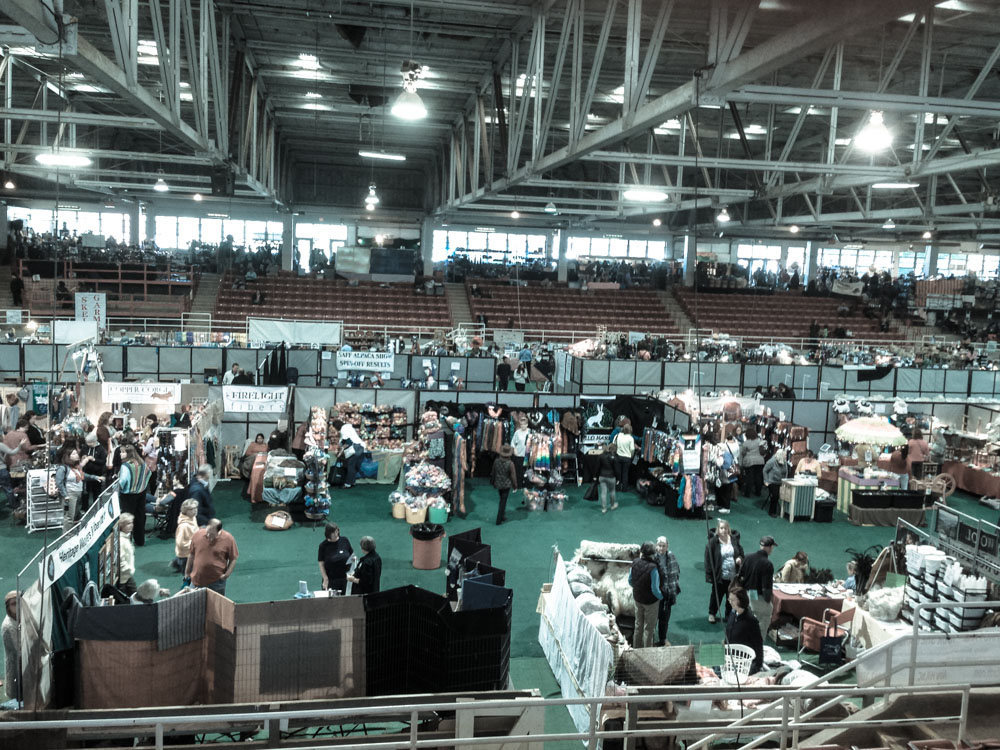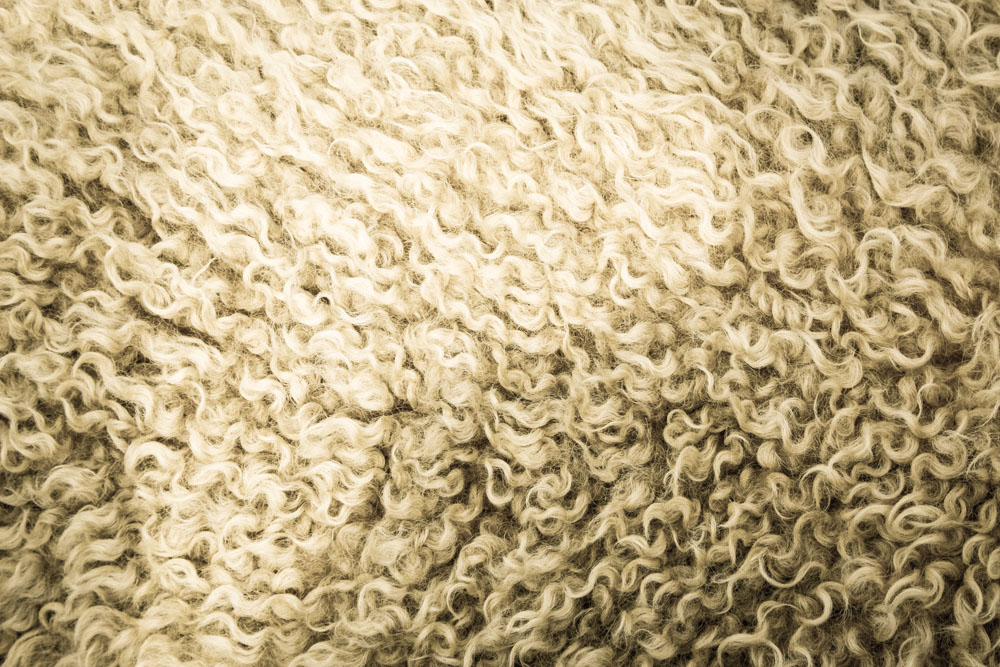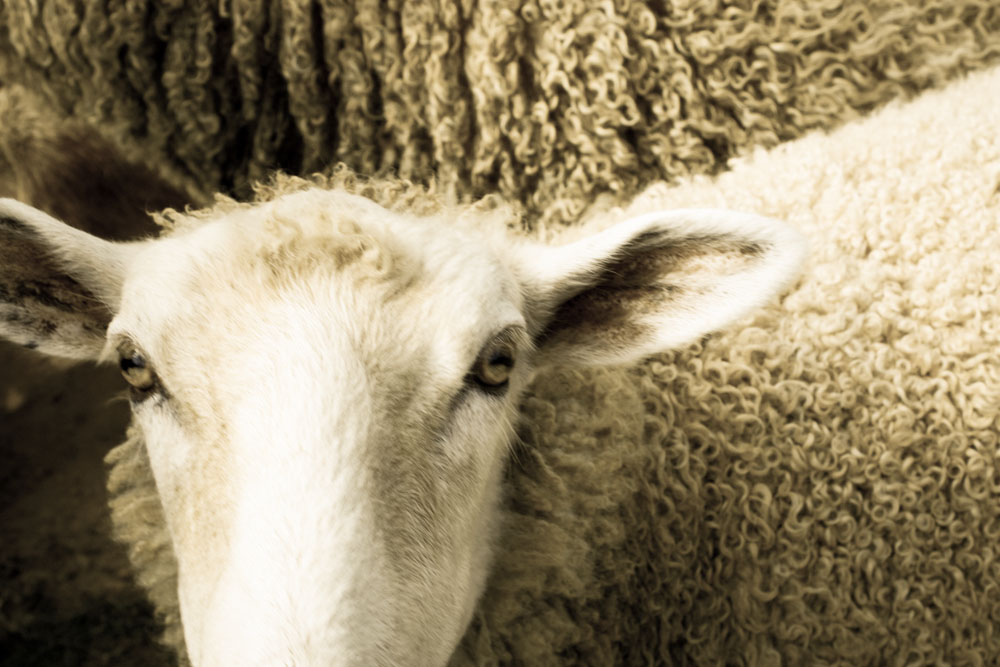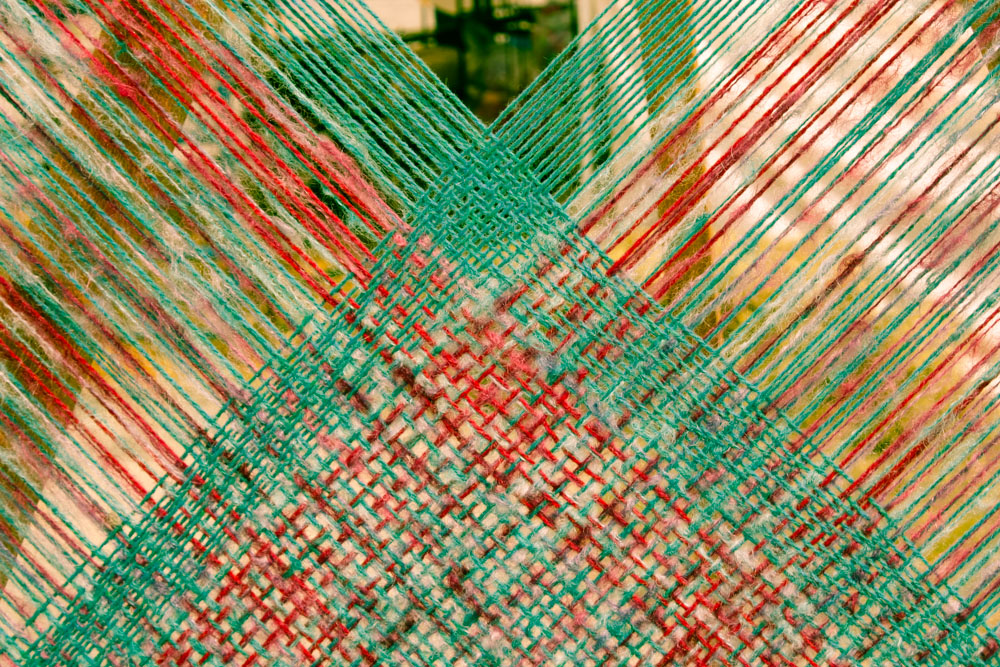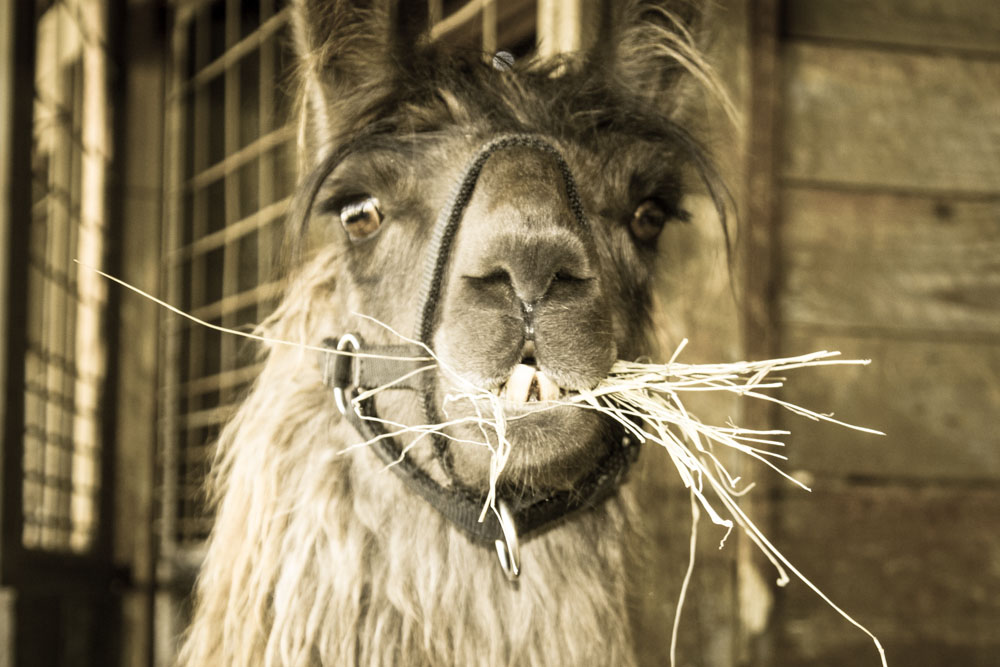Tufting My Heart Out
Back in July, when things were slowing down for the summer, I finally invested in something I’ve been wanting to try for years: tufting. My current body of fiber art keeps getting bigger in size & more and more textured. Plus, my background in commercial interior design has given me a major soft spot for textiles and carpet, so all of that seemed like the perfect combination of reasons to try out this new technique. However, by the time my tufting guns, frame, and materials arrived in early August, I was neck deep in commissions and fall season craft show prep. The box sat unopened in my studio until the week of Christmas, when I finally came up for air.
If you’re not familiar with tufting, it’s kind of like a sewing machine gun for making rugs (or art, or home decor, or whatever you can imagine). Yarn is threaded through the gun, and it pushes the yarn through the foundation fabric. A loop gun gets you tight loops, like you might see in commercial carpet. A “cut” gun gets you cut pile, which is what you probably have in your home (plush yarn fibers sticking straight up from the floor).
Learning something new is very exciting for me, and it’s so tricky to make time for these things, but it’s always worth it. I just recently got to try out my new glorious tools and it was worth the 6 month delay! I took an online training course last week and got started experimenting with the different guns and yarn options right away. Definitely a major learning curve coming from doing every little stitch by hand to a piece of machinery like this, but after a few practice pieces I finally got the hang of things. The gun is almost too fast, compared to what I’m used to, but one of the big reasons I wanted to try it was to be able to speed things up a little with my work. I’m not rushing things, I just dream BIG!
I have really enjoyed playing around with different yarn so far. Of course I started out only using the yarn that the instructor advised, but then once you learn the rules, you’re free to break them, right? Some yarn, like thick rug yarn i use for punch needle projects, works fine but only as a single ply. Thinner yarn, like the nylon I received as a donation from Milliken Floors earlier this year, works well as a 2 or 3 ply.
I LOVE all the possible textures you can achieve with different yarn types, plus changing between the loop and the cut pile guns. I haven’t worked up the nerve to adjust the loop and pile heights yet, but believe me, it’s on my list of things to try once I get comfy with the basics. Until then, I’m here tufting my heart out and enjoying learning something new. Where has this been all my life!?
